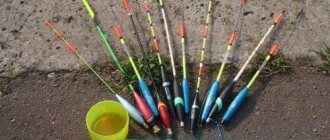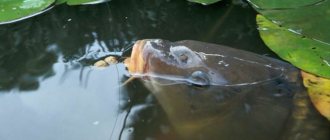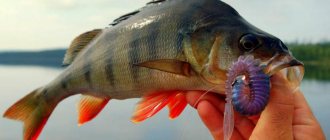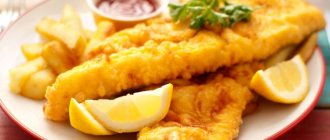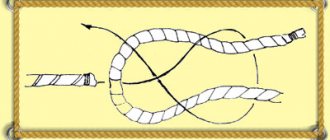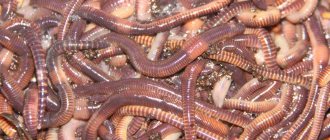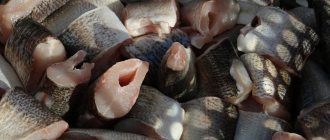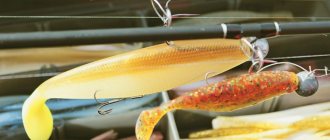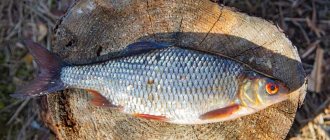Date: March 23, 2021 | 154
Spinning fishing is trending and gaining popularity. Such a segment as ultralight spinning is actively progressing. I talked about the features of this subtype of gear in one of the previous articles. Today I want to start reviewing ultralight class lures. Beginners have a lot of questions about which decoys to choose. There are especially many subtleties and nuances in choosing wobblers. The shelves of specialized stores are overcrowded. In the available variety, it is difficult for beginners to decide on a starting set of baits. Bulk artificial baits are expensive, so not everyone can afford to buy a lot at once, and you don’t want to miss out. I’ll tell you about those ultralight wobblers that have proven themselves well in my practice and judging by the reviews of other anglers.
To begin with, it is worth making a number of comments. The class of ultralight wobblers includes baits weighing up to 5 g. In some cases, 4 g is considered the upper limit.
The variety of volumetric baits is due to the large number of companies present on the market. Almost everyone has several models of small wobblers that fall into the segment that interests us. Some popular baits have a wide range of sizes. The wobbler with the same name is scaled and presented in versions from large to small, ultralight. It is worth noting that such mechanical scaling is not always done successfully. Some wobblers are good only in a certain size, while in others they are downright weak. But what will the manufacturer not do to make a profit? So the fisherman should approach the choice individually. Don’t think that since the large variation worked, the ultralight one will also be great for fishing. In this regard, only a few elite Japanese manufacturers can boast of equally good development of the entire model range. But the prices for their products are appropriate.
As for prices, wobblers are divided into groups:
- expensive, elite, from Japanese and some American companies;
- mid-price category, from Korean, Taiwanese and European companies;
- cheap Chinese crafts, under different brands.
It is worth understanding that more than 90% of wobblers, like other products, are made in China. But quality can vary greatly. Wobblers assembled in Japan or the USA are rare; they are almost never found here. Everything that goes to foreign markets is collected in China under the supervision of companies.
In the middle and cheap segments, there is a practice of taking proven elite Japanese wobblers and making clones and copies. At the same time, the price, as well as the quality, is lower by orders of magnitude. The fisherman sees the resemblance and buys. Here you need to understand that any clone is a completely different wobbler. It can also catch quite well, but it certainly will not implement the same balancing and long-casting systems that the originals have. The class of materials, coatings and hooks is often also significantly inferior.
Let's figure it out. Clones are added to the original models. Many manufacturers make the same wobbler configuration sinking, floating, neutral. Versions are available with the same body geometry, but with different working depths, depending on the size and installation angle of the blade. Plus, there are noise and quiet options. And as a final touch, we apply a color palette. Some companies have a dozen colors, while others have up to fifty or more options. So it turns out that the counters are bursting, and your eyes are wide open. Without exaggeration, there are tens of thousands of different wobblers.
I will sort the baits according to the following criteria:
- manufacturer
- type
- length
- weight
- equipment
- range
- buoyancy
- working depths
- color solutions
- fishing features
- appointment
- price range
Let's get started.
Zip Baits Rigge 35F
We should start the review with the legendary Rigge model. The size range of these wobblers is very wide; there are models of different “heights” that have different buoyancy. But that’s not all: there are bladeless models Raphael and Dimly - sinking “slalom” wobblers with an S-Line effect. But now a few words about the smallest Rigge, about the people’s favorites - “thirty-fifths”.
The most important advantage of the Rigge 35 is that there is probably no fish that these “babies” could not seduce. For a long time, the mini-sized Rigge family was represented, perfectly complementing each other, by only the “sweet couple” - Rigge 35F and Rigge 35F Deep. But then Zip Baits came up with a third bait - Rigge 35SS (weight 2.2 g).
And we also had a wobbler with negative buoyancy in our arsenal. Having only this glorious trinity in the box, you can catch almost any fish on any body of water without much hassle. It’s just a pity for this very fish, since now it has only one chance to survive - to get hooked by a fisherman who preaches the “catch and release” principle. All other meetings with the Rigge troika are simply contraindicated for underwater inhabitants.
Lucky Craft Cra-Pea
This “family” includes several models, which, in turn, are represented by wobblers with different working depths. Most often I use two representatives: Flat CRA-PEA MR (length 35 mm; weight 2.5 g) and Deep CRA-PEA (length 34 mm; weight 3.3 g).
They have the active play inherent in classic crank models. If you need to fish at a depth of up to 1.5 m, the Flat CRA-PEA MR comes into play. If a deeper working horizon is needed, then the Deep CRA-PEA, which easily reaches a depth of 2 meters, acts as a “getter”. The main place where this “sweet couple” is used is in pre- and post-roll pits.
How to fish with a sinking wobbler
Sinking baits are an excellent option for fishing at a depth of at least 5 m for heavy models, and up to 4 m when using light wobblers. For fishing from the shore, uniform retrieves and casting directly into the working area are used. If you catch pike, you can use the Stop and Go technique. To catch perch, it is permissible to use a long rod, twitching method and slow line laying.
From a boat, using a sinking wobbler is an excellent way to catch pike. Maximum fishing efficiency will be achieved by fishing against the current. If there is a strong flow of water, a sinker is fixed in front of the bait. And to get the right move, it’s worth experimenting with the weight of the load.
Zip Baits Hickory
Another series from Zip Baits that deserves a few kind words consists of two “adult” Hickory models and two “children” - Baby Hickory. All four Hickory representatives have long established themselves as baits that are in high demand among many fish in various types of reservoirs.
The main trump card of the entire glorious family is fishing on rifts, where, depending on the required depth, one or another Hickory model is used.
Yo-Zuri L-Minnow 33
The wobbler is a legend that cannot be ignored. For many years now, the L-Minnow has been popular with numerous spinning fishing enthusiasts, and hardly any other model can boast of such a number of conflicting responses.
And it is the “thirty-three” model that stands out significantly from the other two. If we try to briefly describe the L-Minnow 33, then nothing can be said other than “complete unpredictability”.
Often, when fishing at permanent spots, it is impossible to even approximately predict whether this representative of Yo-Zuri will be successful with underwater inhabitants or not. Often the fish completely ignores the wobbler, but it also happens the other way around: it only bites on the “thirty-third”.
Wobblers for catching pike in autumn
The best minnows for catching pike in the fall:
- R539 Yo-Zuri Crystal Minnow DD 110F. This minnow is designed for catching pike in the fall. Its color combines greenish-golden tones, which distinguishes it from the leaves flying into the pond and is of particular interest to the fish. It weighs 15 grams, and the depth of penetration varies from 1.5 to 2.5 meters. Primarily intended for catching pike, but also attracts the attention of perch and asp. Price: 915 rubles.
- Pontoon 21 JPP Marionette Minnow 90F-SR. This model is designed for fishing in clear water. It has a fairly working depth of up to 2 meters. The weight of the bait is 16 grams. Has a good flight range. Perfect for fishing for pike and large pike perch, bersh. Price: 630 rubles.
- Yo-zury R1125-HBGS Crystal Minnow F130. A quickly pop-up minnow that works at medium distances. Deepens up to 2 meters. The most effective fishing depth is 3 meters. It has a rather interesting color and weighs 15 grams. Price: 900 rubles.
The best wobblers for catching pike in the grass, in shallow waters and in deep waters - video review 2021:
Jackson Kumo Lures
A very believable bait. Looking at the appearance of Kumo Lures, it immediately becomes clear for what fishing conditions this “spider bug” was created. The body length of the “insect” is 25 mm; weight 1.7 g.
Available in two versions: smooth and velvety body. Thanks to its great positive buoyancy, it is an unsurpassed leader when fishing in a way in which the wobbler is delivered by the current to a promising place that is difficult to reach for casting, and the wiring itself is carried out obliquely with drift or simply against the current.
In places where trees grow directly above the river and branches hang almost to the water, Kumo Lures always acts as one of the main providers.
Jackson Akkan Bem 20F
Another “miracle” from Jackson. The length, or more appropriately the diameter, since the wobbler is round (which is why it received the nickname “bun”), is 20 mm; weight 3.5 g. The bait is floating. This is a very good addition to the previous model.
The “bundle” of these two baits works just fine: if the fish only responds to baits passing on the surface of the water, then Akkan Bem is used, but if the fish responds to slightly deeper wobblers, then Kumo.
Specifics of “river” ultralight tackle
We talked about the basic ultralight arsenal in general in the first, “lake” part of our practical course. But when choosing a spinning rod for river fishing, nuances appear. Which? Well, for example, in small rivers very small wobblers are often used, weighing 1-1.5 g, and for them spinning with dough up to 9 g is too much. Because even though it is possible to feel the wiring with such a spinning rod, taking into account the current factor, it will not be possible to “load” it when casting with light wobblers. And this affects the accuracy of the cast itself, which in river fishing is one of the main components of success. And then you need to take the spinning rod up to a maximum of 5 g. However, another nuance immediately arises: when the spinning test is reduced, both the so-called “holding resource” and the “animation” ability of the spinning rod to respond to the actions of the fisherman decrease. So, it turns out that if we play it safe and increase the test, we will lose in accuracy and, possibly, in sensitivity, but
Let's purchase animation capabilities. Let's reduce the test - everything will be fine in terms of casting and sensitivity, but the prey, which is large for an ultralight, will do whatever it wants to us. There's a lot to puzzle over here! So when I go river fishing, I have to take two spinning rods - one up to 7 g, the other up to 3.5 g. What should I do? The universal is the enemy of the special, I didn’t come up with this...
Another nuance. When fishing, you should never lose concentration - a fish can strike at any moment, and a considerable one for our gear. And our tackle is thin, and it’s good if all this ends in the loss of the bait, and not in the breakdown of the spinning rod. A properly adjusted friction brake will help forgive some mistakes. You should always remember this - and take full responsibility for setting up and adjusting the clutch before river fishing.
Jackson Cyarl 25s
Another “miracle” from the same manufacturer. A very remarkable “frog” (length 25 mm; weight 1.9 g), with pronounced negative buoyancy. Cyarl's main field of activity is exits from pits.
It is especially good during periods of high water, when the fish are at the very bottom and can only be seduced by bottom fishing. The main thing that needs to be done right away is to calculate the diving speed of the Cyarl in the place of the upcoming fishing.
And when the wobbler reaches the required depth, perform slow, non-stop wiring. It is the smoothness, without any fussiness, that allows this “frog” to show very good results.
Megabass X-30
Without the most authoritative Megabass, no review of spinning lures would be complete. It is quality, regardless of size, that all representatives of the rather numerous “X family” are famous for.
The X-30 model, which has a length of 33 mm, is available in two versions: floating - weighing 1.2 g and sinking - 1.5 g. The first (floating option) is preferable when fishing by rafting, when the fish reacts to bait in the surface layer of water.
If you need to move the wobbler a little deeper, then sinking is the “hunting” option. Both baits complement each other perfectly when fishing on medium and small rivers.
Our Fishing
Fishing with mini wobblers is not only interesting, but also very productive. Try fishing with these wonderful baits sometime during your summer fishing! They come in different lengths and to start with I would advise choosing lures between 2.8 and 5 centimeters in length as these are the best.
For example, this river pike in the photo below was caught on a Salmo Hornet mini wobbler.
And even cunning pike perch during the appearance of fry can also be caught quite well with very small baits (photo below), such as Izumi Alive Swimbaits wobblers.
It is worth noting here that, in general, catching fish with mini wobblers is simply excellent, and you can purchase them in almost any fishing store. Of course, perhaps these baits are not yet so popular among fishermen, perhaps their small size and weight do not inspire much confidence in fishermen, but this, believe me, is up to the first trophy caught! In any case, everything is learned by comparison, and in this case, it is a mistake to believe that mini baits are unlikely to interest a predator!
It is best to fish with these so-called mini wobblers from the end of May to the beginning of August, because it is at this time that fishing with these small baits can from time to time bring very large catches and not only predatory fish, yes, yes, You heard right, large non-predatory fish, such as rudd and ide, also bite on these wobblers. Very naturally imitating live prey, mini wobblers effectively catch almost any fish.
These catchable baits can be divided into three types: cranks, minnows and swimbaits. During the retrieve, small and plump cranks should be presented to the predator exactly like floating wobblers, providing a more uniform retrieve, since during pauses they begin to float, rising to the surface of the water. Crank wobblers produce oscillations, provoking a predator to bite, and when other baits begin to act less effectively, you should definitely take them with you when fishing; with cranks, the fishing process will be much more interesting. By periodically shaking the tip of the spinning rod while retrieving, you can set the wobbler to move one way or another.
Small minnow wobblers, in turn, have a more varied game. These baits are also very, very catchy and simply irreplaceable for any fishing. During wiring, depending on a particular model of wobbler, minnows can be fed as floating, sinking, or suspenders. The latter differ from floating and sinking ones, with which everything is already clear, in that when the wiring is stopped, they seem to hover in the place where they are at the moment the pause occurs.
At the same time, sinking minnows deserve special attention, they are really very good in almost any conditions, they can be carried out in absolutely different ways, both evenly and by tugging the rod with sudden movements, thereby achieving the best result. During wiring, it is very important to take short breaks, since it is during the wiring stop that predator attacks most often occur. After casting a sinking wobbler, you must wait until it sinks to the bottom of the reservoir and after the line sag, you can start retrieving. While the wobbler is plunging, you can count the time in seconds, why is this necessary, but so that during the second cast you can pause a couple of seconds less, in order to be able to carry out the retrieve directly above the bottom surface. And by acting on this principle, increasing or decreasing the waiting time, with the help of sinking minnow wobblers you can fish all the horizons of the reservoir.
Swimbait wobblers differ from minnows and cranks in that they do not have a blade, which is why, in fact, they have a rather unique game that is literally irresistible to large predatory fish. For the most part, these baits are designed for fishing in surface layers of water. And then, when the perch begins to chase the fry on the pond or the pike jumps out of the water from time to time during the hunt, it’s time for swimbaits. In this case, the bite will not take long to arrive.
It is very important to present baits with well-balanced tackle, especially mini wobblers. Wiring can be done using either monofilament or braided fishing line, but in both cases it is best to use a thinner fishing line. In this case, the diameter of the monofilament line can be 0.16-0.18 millimeters, and the braided line can be even thinner, with a diameter of 0.08-0.1 millimeters. A tensile braided line will be stronger and probably somewhat preferable in this case, especially since modern braided lines allow you to cast very, very far, which is exactly what we need! It would be better not to use a swivel, even if only slightly, but it still affects the performance of the bait; instead, it is better to use a light Snap Owner fastener or something similar. Such a light fastener does not spoil the play of the wobbler, and besides, it is very durable and even a very strong pike is not able to straighten it.
If the reservoir is full of pike, then you won’t be able to fish without a leash, but instead of a steel one, it’s better to use a Pike Fluorocarbon leash with a diameter of 0.55 millimeters, it is reliable and will never let you down when fishing for pike of any size.
Mini wobblers are such good baits that they are able to deceive fish of a wide variety of species. Due to this feature, every summer fishing becomes truly exciting and exciting, since you never know what fish will bite next time. It could be pike, perch, brook trout, ide, pike perch, rudd, and even asp. With these baits, fishing will definitely be unforgettable!
| CRANKS: 1. Illex Chubby 2. Cra Pea Medium SPT 3. Mosa-Wobbler 4. Megabass Griffon SR-X 5. EX 407 S (Ecogear) | MINNOW: 1. Humpback Minnow (Lucky Craft) 2. Tormentor Wobbler (ABU) 3. MJ1-D50 SP (Maria) 4. Rapala Max Rap 5. Hiroko Minnow (Cormoran) | SWIMBAITS: 1&2. Shad Alive (Izumi) 3&4. BBZ 1 (Spro) Both of them fish best in the surface layers of water . |
Brook trout (pictured below) also could not outwit a small, catchy wobbler, which turned out to be a Hot Toddy (Quantum) during today's fishing, while at the same time the black Mosa crank made an indelible impression on the perch. These mini baits are so catchy that sometimes the bite follows right away, you just make a cast and the fish is already on the hook! It happens so quickly just when the angler is in the right place at the right time!
And one more thing, in the end I will share with you another fishing trick, the essence of which is that when catching predatory fish with mini wobblers, before you start fishing you will need to find out the size of the fish that predators feed on in this particular body of water, after, then it will be possible to mount the tackle, while it is better not to use wobblers that exceed the size of the potential prey, since there may be much less bites than when using bait, the size of which is approximately equal to the size of the prey that predatory fish feed on in a particular body of water. This happens because predatory fish, as such, more often prefer prey of a certain size and do not always deviate from this rule, adhering to a certain diet.
However, each ecosystem is individual and you can understand which baits are the most catchy only by applying them in practice, because no theory can replace practice! But nevertheless, it is better to adhere to the general rules and regulations and a fry, for example, half a finger long can be easily imitated using a wobbler of exactly the same length. In the photo below, as you can see, another catchy wobbler Spearhead Ryuki 455 Duo copes with this task quite easily.
Daiwa Presso
There is no escape without Daiwa in our spinning affairs, especially in the review of wobblers. A whole series is produced under the general name Presso, which includes both the mini-lures themselves and the gear for their use.
The photo shows minnows - Presso Minnow (length 40 mm; weight 1.8 g); two cranks - Presso Kp Crank (length 35 mm; weight 3.0 g) and Preso Kp Crank DR (same length, but weight 3.3 g). The main place of application is small rivers and rapids areas.
The two Presso spinners (top model called Rave, 24 mm long and weighing 1 g; below Witch 30 mm long, weighing 1.4 g) are originally painted blue and equipped with single barbless hooks. When carried evenly, waddling from side to side, they play with their rear end cheerfully and seductively. Indispensable when fishing for perch, chub, ide, trout and even grayling.
They are “friendly” with the current, but not very strong. Often in hot weather in summer they turn out to be more catchy than many models of wobblers and spinners; Witch does this especially well.
Catching pike by twitching with medium minnow wobblers 70-100 mm
These are the sizes most commonly used for fishing among amateur fishermen. Universal size, suitable for catching pike, perch, asp and, less commonly, chub. This is probably the size that the seller at the market had in mind.
The versatility of the size of these lures opens up absolutely all possibilities for spinning fishing for the angler. The separation should be based on three characteristics: depth, degree of buoyancy and brightness of color.
Deepening the wobbler and tackle
In a nutshell: if there are no visible shelters, most often the pike can be found closer to the bottom. In other cases - under the cover of algae, snags or other objects that will help the predator merge with its habitat and the closer the bait passes to the fish, the greater the chance of tempting it to bite. At the same time, the closer you are to any anomalies - snags, bottom, etc. - the more likely the bait is to get caught and break off.
I combined depth and tackle into one item, since only this characteristic really affects the choice of tackle. Deeper models have a larger blade and, accordingly, greater resistance. With the same size and weight, stubborn wobblers require more applied force and, accordingly, a more powerful spinning rod so that it does not fail during retrieving.
Degree of buoyancy - floating, suspending, sinking wobblers
Floaters often help out in shallow waters, where the water is ankle-deep. If you think that there are no fish in such places, you are deeply mistaken. Twitch - wait until full ascent, two short jerks - wait. The bites at such a depth are very spectacular, accompanied by a fountain of splashes, and it is impossible to say in advance who will prevail in this fight.
Suspender is the most sought after and frequent guest of a spinning rod's box. The ability to hang in the water for up to 10 seconds provokes even the most indecisive pike.
Let's also mention here such buoyancies as slowly sinking and slowly floating. Essentially these are the same suspenders, but with a shorter hanging time (3-5 seconds) and if you look at all the baits more carefully, it turns out that they all either sink or float. The biggest advantage that I noticed was the slowly floating “Rudra”, which somehow got untied from the rope, floated up and after ten minutes washed up with a wave on the shore.
I try not to use sinking ones in untested places. It is better for them to have a detachment with them or be able to swim and dive well. Something like this... In general, no matter what anyone tells you, try to put it on the bottom as little as possible when wiring, otherwise it won’t stay in the box for long.
Choosing bait color
Use more noticeable ones in deep water, muddy water, early morning (evening), shade of trees or cloudy weather. For natural and discreet colors - a sunny day, clean and clear water.
Although these are only general recommendations for beginners, since sometimes it’s good to fish with “acid” even on a hot sunny day, and in crystal clear water.
Angler's Republic Water Plane and Bug Minnow
The famous Bug Minnow is the smallest and most honored of the “little ones.” Almost any fish can be caught with it, even bleak becomes a bloodthirsty predator at the sight of this baby.
The purpose of the Bug Minnow in my arsenal is to catch trout and grayling. The Water Plane model lives up to its name and is a small airplane. At first I thought that this exhibit would take its place among other similar souvenir examples of wobbler construction, but it turned out that the “water plane” copes well with its main purpose - to catch fish.
Water Plane has all the properties of a crank, exhibits medium-active play, and is stable in the stream. Without much difficulty it seduces perch, small pike, chub and ide.
